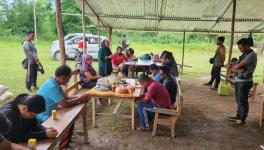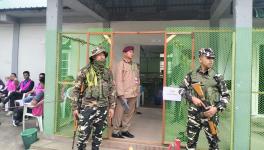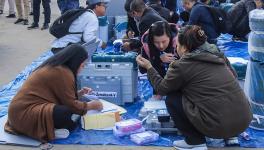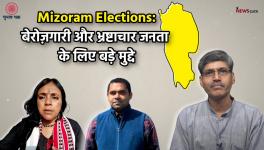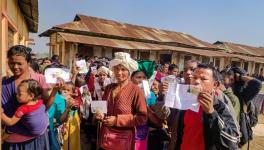Why The Chakmas Have Declared August 17 A Black Day
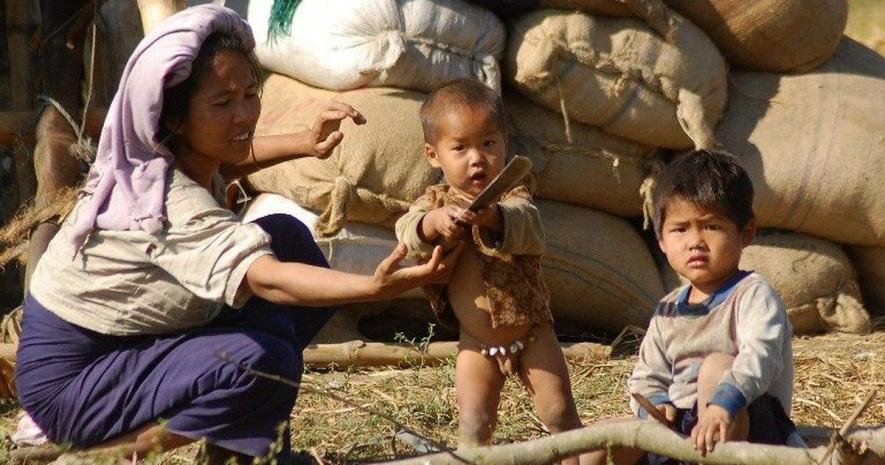
Image Used For Representation Purpose Only, Credits : Scroll.in
The Chakma people living in India have decided to observe August 17 as a 'black day'. This has been stated by the Chakma organisations in Mizoram and Tripura. The reason for declaring August 17 as a black day is that on this day in 1947, the Government of East Pakistan forcibly occupied the Chakma lands in the Chittagong Hill Tracts (CHT). However, the residents of the CHT – Chakmas being the most dominant group – had pleaded to be included within the borders of India. The CHT is home to thirteen groups: Chakma, Marma, Tripura, Tanchangya, Keot, Chak, Pankho, Mro, Murang, Bom, Lushei, Khyang, and Khumi. The story of the people of the CHT after 1947 has been a story of loss and suffering.
According to the archives of the minutes of a meeting held at the Government House, New Delhi, on 16th August 1947, which dealt with the particulars of partition, the occupation of the CHT was hotly contested. The record began with Nehru stating that he never considered any questions to arise over the CHT as the terms of reference of the boundary commission would place it in Indian territory. He also mentioned that representatives from the CHT had met him and expressed their wish to be not included in East Pakistan. Mountbatten, on the other hand, stated that Cyril Radcliffe had included the area in East Pakistan as according to him there existed strong economic ties that bound the CHT to the Chittagong district. Fazlur Rehman countered Nehru on the basis of the terms of reference stating that the 'contiguity clause' “of the terms of reference would not have permitted their allocation to West Bengal.” Why the question of the CHT forming a part of West Bengal was even considered is an anomaly, because if included, it could have been included as a part of Assam – Mizoram did not exist then – just as Sylhet was partitioned between Assam and East Pakistan.
Also read:The Limits of the Nation States
Following the CHT's incorporation into East Pakistan, the Chittagong Hill Tracts Regulation of 1900 – a law creating a system similar to the inner line permit system in Arunachal Pradesh, Nagaland, and Mizoram – was abolished, thus ending the autonomy the CHT had enjoyed till then. Fast forwarding to the 1960s, the Kaptai Dam was completed in 1962. Built by funds and engineers from the United States of America, the dam submerged over 647 sq. km. of arable land and homes. This prompted an outflow of around 40,000 Chakma refugees into India. The refugees were first housed in Tripura, after which they were later relocated to the North East Frontier Agency (NEFA) – now Arunachal Pradesh – where their stay is currently being challenged by the local communities.
After the 1971 war which led to the creation of Bangladesh, the communities of the CHT appealed to Sheikh Mujibar Rahman to recognise their rights and to reinstate the CHT Regulations of 1900. However, perhaps caught in nationalist euphoria, the appeal was denied. The Constitution adopted by Bangladesh was unitary in nature, and it also enforced a unitary ethnic nationalism. This prompted the people of the CHT to organise themselves politically and the Parbatya Chattagram Jana Sanghati Samiti (PCJSS) was formed. M.N. Larma, a Chakma, won the 1973 elections to represent the CHT in the Bangladesh parliament. However, his demands for granting autonomy to the CHT went unheeded.
These unfulfilled demands led to the formation of an armed group, the Shanti Bahini. From the mid-1970s till 1997, the Shanti Bahini was locked in a guerrilla war with the Bangladesh army. Like in almost every theatre of civil war, the military represented an occupation force, and committed atrocities upon the civilian population. Apart from the general practice of torture, rape, forced disappearances and summary executions, the Bangladesh army also created 'strategic hamlets'. Strategic hamlets are forced grouping of villages and function more or less like concentration camps. The earliest use of this strategy was probably when the British were fighting the communist insurgency in Malaya; the strategy was then implemented in Nagaland, Mizoram and Vietnam to name a few. The CHT is just another addition to the long list of regions where this strategy was adopted.
In 1997, the Shanti Bahini laid down their arms and signed a peace accord with the Government of Bangladesh. It was assumed that the peace accord would resolve the issues of the people of the CHT. However, according to reports published after the accord, the clauses are yet to be implemented. Further, the atrocities against the people of the CHT have not stopped either. In fact, on several accounts, fresh allegations have been leveled against the Government of Bangladesh, that they are tacitly supporting a process of ethnic cleansing. This is being done by encouraging settlers from the plains to occupy lands in the CHT. The Bangladesh army and the police too, are accused of supporting the settlers by turning a blind eye to arson, rape, and criminal intimidation perpetrated against the jummas. Jumma is a derogatory term used in Bangladesh to refer to the hill people, and is derived from the practice of jhum cultivation that most of the hill communities practice.
The present day situation of the people of the CHT has not improved much. Even though the armed political movement ended with the peace accord, the violence and discrimination meted out to the people can still be seen on a regular basis through news reports. Since the Chakmas are the most dominant group and are spread across the largest geographic area, observing August 17 as a black day has been their initiative. This is probably the only thing the people of the CHT can do in the face of a silent international community.
Get the latest reports & analysis with people's perspective on Protests, movements & deep analytical videos, discussions of the current affairs in your Telegram app. Subscribe to NewsClick's Telegram channel & get Real-Time updates on stories, as they get published on our website.










